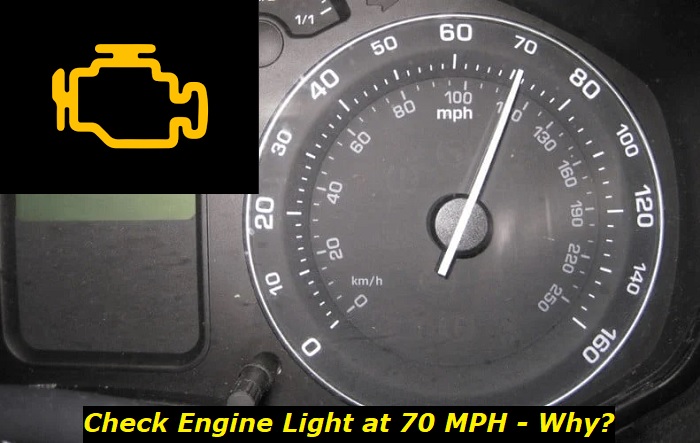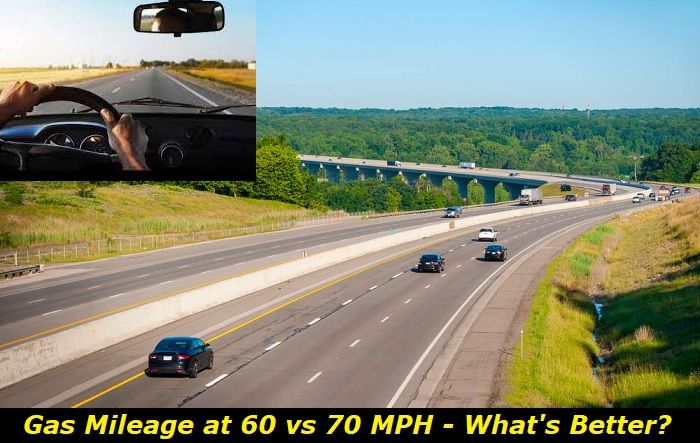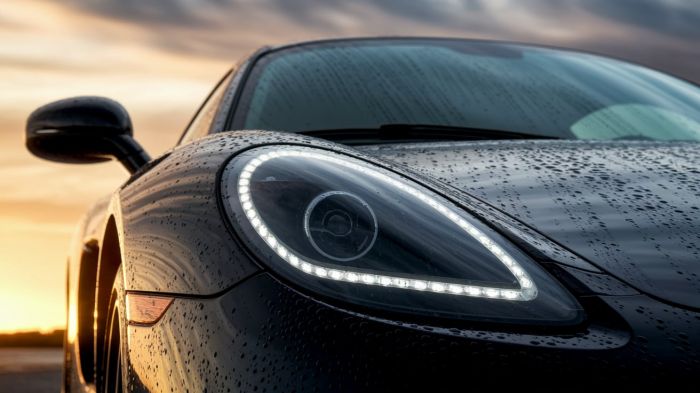It's always nice to drive without any issues on the freeway until something ruins your smooth driving experience. For example, it can be weird to discover that your check engine light (CEL) comes on the dash whenever you hit certain speeds. Don't worry, we've got you covered in understanding this acceleration issue.
Check engine light highlights
- Common reasons:vast choice of different problems
- How to fix:read the codes to narrow down the issue
- Possible consequences:depends on the actual culprit
- Priority level:Medium
- Can you drive?Carefully
- DIY repair:Impossible
- Repair price range:$150-$1,000

What Happens When Your CEL Comes On at 70 mph?
Your check engine light could come on once you accelerate past 70 mph. And it may stay on as long as you're driving past at speeds that are past that mark.
For example, it's an engine firing (misfiring) issue if the light was blinking when it got activated. Also, it could be anything from a transmission issue to a defective or incorrectly placed gas cap if you've been getting a solid CEL from the start.
The above means that there are so many possibilities. And what do you do in such a confusing case? First, use a scanner. Second, realize that it's not a good idea to begin DIY physical checks on your own. Third, affordability may have a role to play in your final decision.
Find out what the real reason for the illuminating dashboard alert is by hooking up a scan tool to the car if you have one. The device will help in retrieving the codes that have been logged into the computer.
Some mechanics offer code reading services for free, but their generosity will certainly not extend to sophisticated scan tool functions unless it's somehow covered by a repair warranty policy. Expect to get multiple codes that are pointing to various problems (which may be related).
Note: Endeavor to get a scan tool so that you can at least take the first step on your own in such a scenario. It will help in calming your nerves as well as getting a quick and trusted fix at an auto repair shop.
Thinking of Continuing To Drive? Don't!
You may realize that your car can still be driven, but try to resist the urge to continue that journey. We're talking about the possibility of experiencing catastrophic engine failure which won't be worth the risk. You'll be spending more money on more problems.
You may notice a slight decline in performance or loss of power. A cloud of black smoke may even be noticed, especially when you need to step on the gas to go uphill. It may not be enough to clean the DPF (diesel particulate filter) or service certain parts of the engine in this case.
Seeing black smoke means that there's something terribly wrong with your engine and/or exhaust system that needs urgent attention. It could be problems with the fuel itself, and it's most likely the air-fuel mixture being too rich.
The fuel injectors may be adding excess fuel or the intake valves may not be allowing adequate air in. The injectors could be leaky, the fuel pressure regulator may be defective, or the air filter may be bad.
Other Check Engine Light Behaviors at 70 mph
The CEL coming on when the vehicle's computer has detected a fault of some sort during diagnostics means that the computer is getting alerted repeatedly by the fault. But if you notice that the light has gone off, then the problem may no longer be occurring.
However, the light could come on and go off once every day until you fix the cause. This certainly means the problem keeps going and coming back. Procrastination may make it get worse until the light starts staying on for longer (multiple) periods daily.
The light could stay on till you kill the engine, restart it, and accelerate to 70 miles per hour again. But remember not to try driving further. Just park at a safe spot and call a mechanic or tow service.
It may not be easy for some car users to realize that the light comes on at 70 mph. So if you fall into this category of drivers, then try to remember when the car triggers the CEL. Maybe you can take the risk of testing the car at 70 mph and above for just one well-calculated try. But stop the car as soon as you car after.
Solutions To Seeing the CEL Coming On at 70 Miles Per Hour
1) Cleaning the MAP (Manifold Absolute Pressure) Sensor or EGR Valve
You may notice that the computer is reading a low (-) vacuum or high (+) vacuum at the MAP sensor when scanning for ECM codes. Clean the MAP sensor by uninstalling it and using a throttle body cleaner. Another culprit that may have to be cleaned to get things back to normal is the EGR (exhaust gas recirculation) valve.
However, you'd have to change to change such parts if they've been confirmed to be defective. Ensure that you buy good quality parts so you won't have to re-address the same problem in a short time.
2) Meet the Driving Conditions for an Automatic System Test
The light may be coming on because the car's computer wants to perform an automatic routine system monitor test. Some monitor tests need a steady or specific speed on a highway to be carried out. Keep in mind that other conditions may have to be met to ensure that the test is completed.
3) Rectify the "Fuel Running Lean" Situation
The code(s) that point to the fuel running lean may have come up. Your first instinct may be to switch fuels, but don't do that yet. There may be something causing the fuel to run lean. For example, poor fuel pressure or inadequate fuel volume. The possible culprits for these two situations are listed below.
- Bad sensors (e.g. defective mass airflow (MAF), knock, EGR, and MAP)
- Vacuum leaks
- Clogged fuel filter
- Failing oxygen sensor
- Faulty fuel injectors
You'd have to perform a replacement with a standard aftermarket part if any of the above becomes faulty. But don't just replace one part and see what happens as a lazy way to see if things will go back to normal. Ensure that the scan tool results and physical checks have confirmed that any of them are malfunctioning.
4) Getting Boost Pressure Fault Codes
Diagnose this by performing some mechanical checks on the turbo, turbo boost pipes, and intercooler for leaks and damage. The next session will be for the exhaust and intake bolts and gaskets. There may be loose components in such areas.
5) Rectify the "Fuel Running Rich" Situation
You may have to do any or all of the following for this:
- Change the air duct flap.
- Replace the defective spark plugs.
- Clean the MAF sensor.
- Clean the vacuum hoses/lines.
Note: The problem may be electrical, although this isn't common. Check the fuses and dashboard bulbs for signs of shorting or bad connections. There could be a burnt wire or low voltage may be happening at a crucial point.
Dealing with the Professional Mechanic
In the course of our research, we realized that some online forum thread contributors complained of having to take their cars back to the auto repairer even two or three times. This is because the light kept behaving the same way (coming on at 70 mph).
It may be that the mechanics kept fixing the wrong issue or maybe they didn't fix all the minor faults contributing to the problem. You'll have to exercise patience in working with the repairer to find a lasting solution to your car's CEL hassle.
However, ensure the repair service guarantees a free repair each time you return your car for the same issue in a specific time frame. Some mechanics may want to bill you for new checks even if it's the same issue they fixed the previous day.
Conclusion
Now that you know what could be wrong with your car or truck when the CEL comes on at 70 mph, you'll be able to make better decisions on your next course of action. Our advice is to never drive the car further after seeing the dashboard alert. Things could go from bad to worse just by driving for a short period.
Hopefully, you'll have a scan tool with you to have a first look before taking the car to a mechanic for a thorough examination. A DIY approach to performing physical diagnoses is however not recommended. This is unless the scan results are pointing to potential minor fault locations that can easily be checked the DIY way.
About the authors
The CarAraC research team is composed of seasoned auto mechanics and automotive industry professionals, including individuals with advanced degrees and certifications in their field. Our team members boast prestigious credentials, reflecting their extensive knowledge and skills. These qualifications include: IMI: Institute of the Motor Industry, ASE-Certified Master Automobile Technicians; Coventry University, Graduate of MA in Automotive Journalism; Politecnico di Torino, Italy, MS Automotive Engineering; Ss. Cyril and Methodius University in Skopje, Mechanical University in Skopje; TOC Automotive College; DHA Suffa University, Department of Mechanical Engineering






Add comment